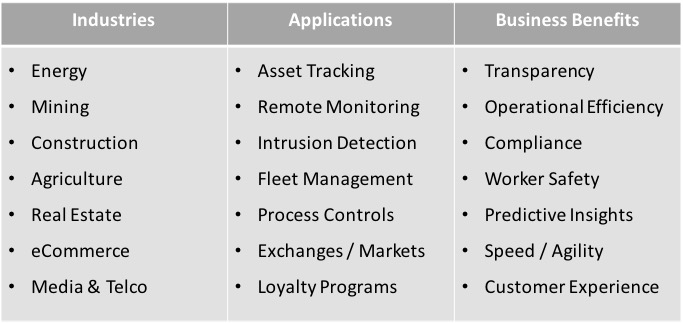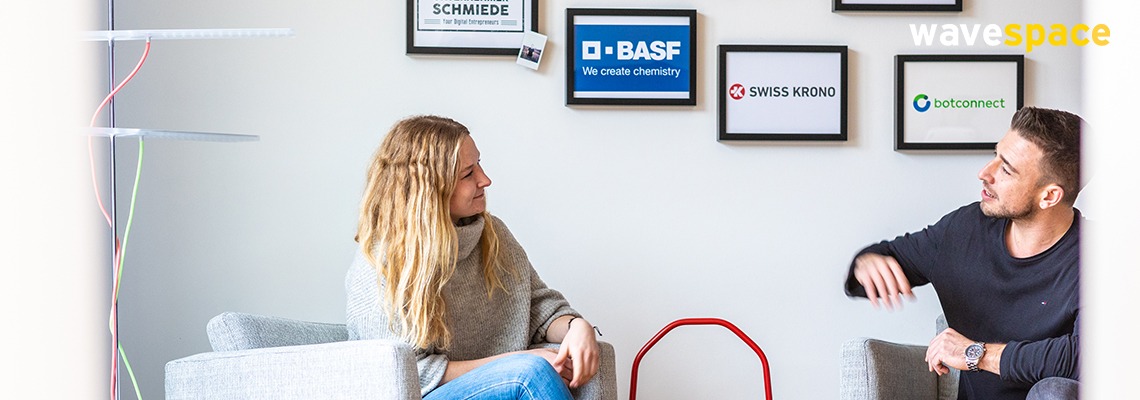Blockchain Demystified
23. November 2016
Blockchain is receiving a lot of attention, and is making inroads into the enterprise space. But what is Blockchain exactly, and why is it important? In the following blog, etventure’s Lukas Bower explains Blockchain – for an executive audience.
What is Blockchain? In brief, Blockchain is the technical foundation of Bitcoin – the well-known crypto-currency with shadowy origins. At first, Bitcoin and Blockchain were on the fringe – respected by hackers, the tech elite, but regarded with suspicion by the mainstream. This has changed, and there is a growing recognition that Blockchain is important for the enterprise.
Beyond the jargon
Blockchain’s roots in the tech world have followed it into the mainstream, so often Blockchain discussions quickly become quite technical – involving jargon, and details which a layperson can find difficult to grasp. As a result, Blockchain is sometimes still misunderstood in the boardroom – and viewed as “bad” or “risky”. The fact is, Blockchain is like any other enterprise technology – it will only be secure and robust if it is implemented according to best practice.
How does it work?
So, what exactly does Blockchain do?
Since the dawn of the internet, exchange of information has been easy. Email a PDF of your annual report to your shareholders. Send a picture of your kids to your family. However, there has never been a way to directly exchange value.
The Internet of Value
In the examples above, the sender is always able to keep a copy of the original file – the annual report or the picture of your kids. Therefore, with traditional information exchange on the internet – it is fundamentally impossible to send someone $5. Why? You can’t send someone $5, and still have $5 yourself.
Enter Blockchain. The technology enables an Internet of Value – and just like cash, this value can be passed around. This means if I send you $5, I create a Blockchain debit – and you receive a credit. The Blockchain technology ensures that wherever that $5 goes from there onward, the person who has it is credited, and the person who sent it is debited.
It is important to note that Blockchain can be used to represent more than just cash value. Blockchain can also be used to track other values – such as Kilowatt hours of energy, shares of stock, “wear and tear” of equipment, or digital certificates of ownership.
Distributed Ledger
The other key point to understand about Blockchain is that is a distributed system. Before Blockchain, financial systems relied on a central database of transactions – the ledger. Blockchain is a distributed ledger. This means that the ledger is distributed amongst peers within its Blockchain network – there is no single, central database.
This seems simple enough, but has far-reaching implications. Consider that today, most transactions rely on a trusted central authority – such as a bank, a stock exchange, or an energy exchange. With a distributed ledger, the trust is achieved through transparency – across the network as whole. If an unauthorized transaction is introduced, it will not be added to the shared ledger unless it is accepted by the entire network.
Real-world applications
At this point, you might be wondering what all the fuss is about. Why should you care?
The answer is that Blockchain is a technology with truly disruptive potential. It provides a mechanism to bypass traditional centralized transactional systems, and exchange value in an entirely new way.
Smart Contracts
One application for Blockchain that is already getting a lot of traction is Smart Contracts. A Smart Contract is a set of rules that can be pre-programmed into a Blockchain network. If an incoming contract abides by the rules, the Contract is executed automatically – including all of the necessary credits/debits.
Risk Management
Imagine you are a real estate firm that owns 30 high rise buildings in Manhattan. You set up a Blockchain system in each building, that tracks water pressure, elevator load, and other building metrics associated with risk. You allocate a Blockchain credit to each building – think of this as the building’s “risk budget”. Each time a building metric exceeds a safe limit (water pressure too high, elevator over capacity), the violation triggers a debit from the “risk budget”. Over time, it will become apparent which of your 30 buildings represent the highest risk overall – and where you need to make capital improvements.
Blockchain and the Internet of Things
The Internet of Things is driving an explosion of sensors and data – on a scale that dwarfs anything that has come before.
Blockchain’s distributed architecture is well-suited for IoT. Blockchain nodes can be set up for logical grouping of “things”, then data from multiple nodes can be aggregated together – to build up a big picture of all the data.
Consider a “Smart City” for example, where Smart Buildings use Blockchain to track energy and water usage, wear and tear of building systems, and more. Blockchain could also be used to aggregate data from individual buildings – to track performance across city districts, and then aggregate district data to track the performance of the entire city.
Finding a win – Blockchain by industry
At etventure, sometimes we feel like we’re in the Wild West – carving out a new frontier with our customers, as the pioneers of a new era in business innovation. Victory goes to the bold, and those who adopt disruptive technologies early – and execute well – will position themselves as leaders in their industries, leaving the late adopters in the dust.
Financial Services
Many Financial Services firms secure their revenues by leveraging their positions as central points of control. So, there is rightfully a lot of fear about Blockchain and decentralization – it is a direct threat to traditional revenue streams. However, disruptive innovation is happening whether Financial Services firms like it or not – and they can either get on the bandwagon, or be left behind.
Manufacturing
While Blockchain seems best-suited for Financial Services, it also has a myriad of applications in manufacturing. Smart Contracts between suppliers and manufacturers can cut costs and increase efficiency. Blockchain’s distributed ledger can be also used on the factory floor – for inventory control, smart purchasing, and even quality management.
Transportation and Logistics
Transportation and Logistics is another sector that stands to benefit from Blockchain. The Blockchain technology is perfectly suited to track the movement of assets along the entire logistics chain – and Smart Contracts are one way to streamline the flow of goods from end-to-end.
Other Industries and Applications
The table below highlights other industries where Blockchain is making an impact – along with potential applications, and business benefits.

Conclusion
Blockchain’s capability is deceptively simple, but will open up new frontiers to innovators who truly grasp its potential. However, Blockchain also creates a great deal of confusion – and it can be difficult to separate fact from fiction. If you’re struggling to take the first step with Blockchain, etventure has the expertise to help you get started.





* Required field